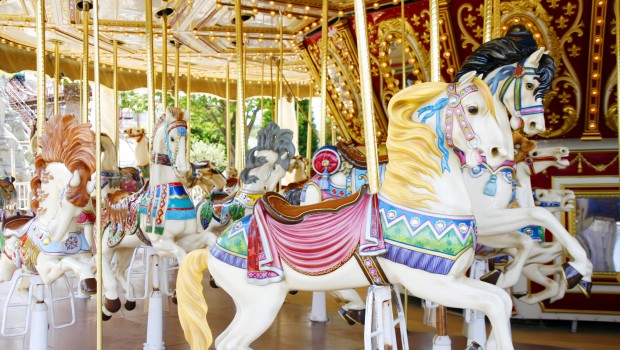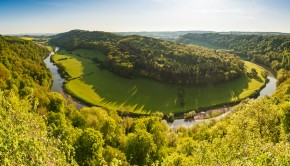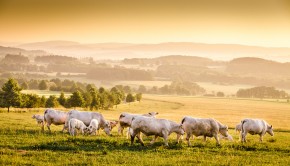Herefordshire Activities
Hereford Cathedral and the River Wye
Herefordshire: a gloriously rural county, known as the land of milk and honey, with hidden treasures for visitors to explore.
In the cathedral city of Hereford is the beautiful Hereford Cathedral home to the Mappa Mundi. An outstanding treasure of the medieval world this map, created around AD 1290. With the River Wye meandering through stunning unspoilt countryside awash with artisans, beguiling black and white villages, historic market towns and a picturesque City centre, there is certainly something for everyone to enjoy.
This beautiful cathedral is the home of a community which has worshipped and worked together here continuously for well over 1200 years.
It is a place where the mission of the church to proclaim Christ’s love is central, and therefore the community has always warmly welcomed visitors.
Hereford Cathedral’s main role is as a centre of Christian mission and the seat of the Bishop. Each day, three acts of worship take place which ensure that the life of prayer which gives energy to Christian mission is carried on.
The Bishop of Hereford’s throne near the high altar gives the Cathedral church its name; the Latin word for throne is cathedra. The Bishop is chief pastor of a large diocese stretching from the Welsh borders in the west across to Worcester and
Gloucestershire in the east, and from just south of Shrewsbury in the north to Monmouth in the south.
The Bishop of Hereford’s throne near the high altar gives the Cathedral church its name; the Latin word for throne is cathedra. The Bishop is chief pastor of a large diocese stretching from the Welsh borders in the west across to Worcester and Gloucestershire in the east, and from just south of Shrewsbury in the north to Monmouth in the south.
A Cathedral dedicated to the martyred King Ethelbert has stood on this site since Saxon times and is home to a community which has worshipped and worked together here continuously for well over 1200 years. It is a place where the mission of the church to proclaim Christ’s love is central and visitors and pilgrims are especially welcome.
Today’s building contains some of the finest examples of architectural excellence from Norman times up to the present day including the Romanesque Nave, the beautifully restored Shrine of St Thomas of Hereford in the North Transept, the ancient South Transept and the award-winning twentieth-century New Library Building.
New commissions also include the gilded and painted shrine of St Ethelbert and four stunning stained glass windows dedicated to the life and writings of 17th century cleric and poet Thomas Traherne.
The award-winning Mappa Mundi & Chained Library Exhibition is open all year round and is famous for housing both the spectacular medieval map of the world and the cathedral’s unique Chained Library. Here the stories of these national treasures are told through models, original artefacts and special exhibitions. Click here for exhibition admission charges.
Many other activities include concerts, Exhibitions, Organ Recitals and even a working Stonemasons Yard, where our skilled craftsmen are still using traditional methods to restore this ancient and beautiful cathedral.
Parts of the building may be restricted due to special services, funerals or events that take place throughout the year. If you have a particular request or reason for your visit they strongly recommend you contact them and check opening times before your visit.
Getting Here:
Hereford Cathedral,
5 College Cloisters,
Cathedral Close, Hereford,
HR1 2NG
Phone: 01432 374200
Email: office@herefordcathedral.org
Mappi Mundi – Home of the Hereford Cathedral
The Hereford Mappa Mundi is unique in Britain’s heritage; an outstanding treasure of the medieval world, it records how thirteenth-century scholars interpreted the world in spiritual as well as geographical terms.
The map bears the name of its author ‘Richard of Haldingham or Lafford’ (Holdingham and Sleaford in Lincolnshire). Recent research suggests a date of about 1300 for the creation of the map.
Mappa Mundi is drawn on a single sheet of vellum (calf skin) measuring 64″ by 52″ (1.58 x 1.33 metres), tapering towards the top with a rounded apex. The geographical material of the map is contained within a circle measuring 52″ in diameter and reflects the thinking of the medieval church with Jerusalem at the centre of the world.
Superimposed on to the continents are drawings of the history of humankind and the marvels of the natural world. These 500 or so drawings include of around 420 cities and towns, 15 Biblical events, 33 plants, animals, birds and strange creatures, 32 images of the peoples of the world and 8 pictures from classical mythology.
Christopher de Hamel, a leading authority on medieval manuscripts, has said of the Mappa Mundi, ‘… it is without parallel the most important and most celebrated medieval map in any form, the most remarkable illustrated English manuscript of any kind, and certainly the greatest extant thirteenth-century pictorial manuscript.’
Getting Here:
Hereford Cathedral,
5 College Cloisters,
Cathedral Close, Hereford,
HR1 2NG
Phone: 01432 374200
Email: office@herefordcathedral.org
Violette Szabo Museum
If you’re planning on seeing something really fascinating and worthwhile, make sure you don’t miss the museum dedicated to Herefordshire’s greatest heroine, Violette Szabo, a spy working behind enemy lines in occupied France during World War II. Maybe you’re just looking for a typical art gallery, Hereford have a Museum and Art Gallery, showcasing aspects of Herefordshire history and life. Both make a great combination for a real time machine throughout Herefordshire.
How the museum got started
The Violette Szabo Museum opened its doors in June 2000 and was the brain child of Rosemary Rigby MBE who was Violette’s aunt. Many years of fundraising and collecting artefacts from people who knew Violette or served with her during the war came to fruition on that day in June.
What can we see at the museum
The story and life of Violette Szabo is much in evidence at the museum along with life stories of the many resistance workers who sacrificed their lives for our freedom. Visitors can learn about Ravensbruck the concentration Camp that Violette and many of her compatriots were sent to following their capture.
Carve HerName with Pride – The Story
Violette Bushell was the daughter of an English father and French mother who was born in France but moved to live in England when she was twelve years of age. Following their honeymoon Etienne resumed his station in the army and eventually became involved in the fighting at the Battle of El Alamein in North Africa where he was killed when leading his men in a charge from the front. Violette had only just given birth to their daughter when Etienne was killed therefore he never got to see his child.
More WW2 Museums in Britain
If Violette’s amazing story inspires you as much as it has done us you may wish to visit one of the other great World War 2 Museums in Britain. There are many museums spanning the breadth of the UK so whether you live in the north or south of the country you happy wheels demo will be able to find out more about the Britain’s role in World War 2 and the brave men and women who played their parts in the war.
Getting Here:
Violette Szabo GC Museum
Cartref
Tump Lane
Wormelow
Herefordshire
HR2 8HN
Phone: 01981 540 477
Estanor Castle
Eastnor Castle in Ledbury is a fairytale Georgian castle in the dramatic setting of the Malvern Hills and surrounded by a beautiful deer park, arboretum and lake.
It’s the home of the Hervey-Bathurst family, situated in a 5,000 private estate nr Ledbury, Herefordshire. The castle and grounds are steeped in history and is a perfect venue for hosting weddings, private parties, corporate events, filming or simply a good value family day out.
History – The 1st Earl Somers
The Cocks family, ancestors of the present owner, moved to Eastnor at the end of the 16th century. They bought the Manor of Castleditch, an engraving of which is in the Great Hall, and over the following 200 years gradually accumulated further land in this area.
The Cocks married into the Worcestershire-based Somers family; the aggregation of their estates with the valuable inheritance passed down by the Lord Chancellor Somers in the early 18th century, the banking wealth of the Cocks Biddulph bank (now incorporated into Barclays), and the sale of his father’s estate at Dumbleton, near Evesham, gave the 1st Earl Somers the means to start building the castle in 1812. The family, distinguished in law, politics and the army, needed a new residence more in keeping with its status.
History – The construction of the Castle
Eastnor was built by the 2nd Baron (Lord) Somers, later 1st Earl, between 1810 and 1824. The combination of inherited wealth, his judicious marriage to the daughter of the eminent and rich Worcestershire historian, Rev. Treadway Russell Nash, and his great ambition prompted the 1st Earl to commission a castle to impress his contemporaries and raise his family into the higher ranks of the ruling class. Then, as now, the size and splendour of a country house evidenced the standing and fortune of any family.
His architect, the young Robert Smirke, who was later well known for his design for the British Museum, proposed a Norman Revival style. From a distance, Eastnor tried to create the impression of an Edward 1st-style medieval fortress guarding the Welsh Borders. It was a symbolic and defiant assertion of power by an aristocrat in a period of fear and uncertainty following the French Revolution and during the Napoleonic Wars.
The symmetry of the design emphasized authority, distinguishing Eastnor from the more rambling, picturesque, castellated mansions of a slightly earlier period at Downton Castle (Shropshire) and Smirke’s 1805 creation for the Earl of Lonsdale at Lowther Castle (Cumbria).
By most standards, the castle is massive, and the construction team and materials used were on a similar scale. 250 men working day and night were employed over the first six years of building, and in the first 18 months 4,000 tons of building stone, 16,000 tons of mortar and 600 tons of wood were used.
History – Castle Interior
Smirke’s interiors were simple and in keeping with the external medieval style: architectural details remain in the Red Hall, Dining Room and Staircase Hall. In 1849, the 2nd Earl commissioned A W N Pugin, well known for designing the Gothic interiors of the Palace of Westminster after the fire of 1834, to redecorate his Drawing Room in the more elaborate Gothic Revival style, before Charles, 3rd Earl Somers, undertook further decorating work in the 1860s and 1870s, so Eastnor, possibly in a unique way, epitomises three successive phases of 19th century domestic taste, Regency Baronial, Catholic Gothic and aesthetic Italian.
It is possible to trace the evolution of taste through the Victorian period, ending in the Long Library and the State Bedroom, when the fashion had reverted to the Renaissance period. But as the Gothic Drawing Room represented the latest style in its time, it confirms that Charles, who was instrumental in his father’s decision to commission Pugin, was at the forefront of contemporary taste even before he inherited the estate.
Getting Here:
Eastnor Castle
Ledbury
Herefordshire
HR8 1RL
Phone: +44 (0)1531 633160
e-mail: enquiries@eastnorcastle.com
Old King Street Farm
Llama Trekking and Holiday Cottages in the Black Mountains of Herefordshire at Old King Street Farm
Enjoy a break in the glorious Herefordshire and Welsh border countryside whilst staying in a beautiful Four Star and Five Star self catering Herefordshire barn conversion holiday cottage.
Take a llama trek in Herefordshire or the Black Mountains of Wales
Visit the book town of Hay-on-Wye, the Cathedral city of Hereford which houses the largest chained library in the world and the Mappa Mundi, the market towns of Abergavenny, Ross, Monmouth, Ludlow and Chepstow
Walk on a long distance footpath – Offa’s Dyke Path, the Marches Way or the Herefordshire Trail, and take a trip to a Marcher Castle – Skenfrith, Grosmont or the White Castle
Visit the National Trust properties of Croft Castle, the Brockhampton Estate, Berrington Hall and the Weir Garden
Pomona Cottage and The Cider House are absolutely delightful holiday cottages, and make a superb base for your holiday stay in Herefordshire
Broadband wireless WIFI connection to both cottages
Getting Here:
Amanda Huntley and Robert Dewar
Golden Valley Llamas
Old King Street Llama Farm
Ewyas Harold
Hereford
HR2 0HB
Phone: 01981 240 208
Email: info@oldkingstreetfarm.co.uk
Cider Route
Take a journey along the Cider Route. There are over 800 orchards in the Wye Valley, which make a significant contribution to the beautiful countryside you will pass on the route.
Throughout Herefordshire there is a strong tradition of farm cider-making. Farmers produced cider to be drunk by the farm labour force during the following year, especially the busy times of hay-making and harvest. Farmers used to sell cider to local pubs and cider merchants for re-sale in towns.
For 350 years cider production in Herefordshire has been on a rollercoaster, periodically rising to become an industry of great reputation. Throughout this time Herefordshire has been the major player in cidermaking in Britain and Herefordshire people have led the way. There is no better place to find out about cider.
The world’s biggest cider mill, Bulmers(now owned by Heineken UK), is located close to the city centre of Hereford where it was built in 1887 by local vicar’s son, Percy Bulmer. Sadly, visitor tours of the mill are no longer possible, but every pub and country inn in Herefordshire – as well as the rest of the UK – will stock a selection of Bulmers brands, Strongbow, Woodpecker, Scrumpy Jack or the cask conditioned, Bulmers Traditional.
Each year, in long term partnership with local farming families, Bulmers grow around 100,000 tonnes of bittersweet apples for our ciders. We have over 800 orchards in the Wye Valley, which make a significant contribution to the beautiful countryside you will pass on the cider route.
Getting Here:
The Discover Herefordshire Centre
1 King Street
Hereford
HR4 9BW
Tel: +44 01432 268430
Email: email: liz.hill@visitherefordshire.co.uk
Website: http://www.visitherefordshire.co.uk











